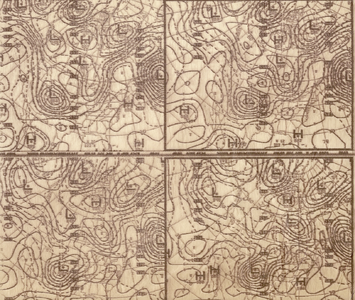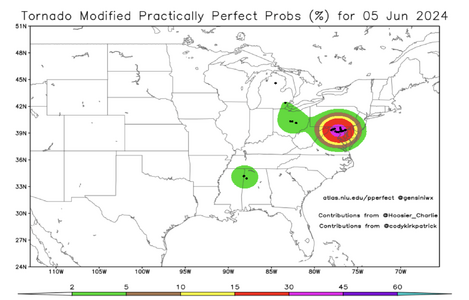Perhaps we need to just meet in the middle a bit or agree to disagree. My point is that, based on the best available data we had at the time, yesterday would have been a very difficult forecast, butting up right against the limit of practical predictability.My point is that yesterday was hardly impossible to forecast and that it certainly could have been nowcast better than it was.
That one person happened to "nail" it (please, show me the forecast so I can have a look at it) should be regarded more as serendipitous than some kind of underlying skill (unless Joe Bastardi has a rigorous track record of properly forecasting every event; provide evidence if so).
This gets at ensemble/probabilistic forecasting. Generate a 1000-member ensemble centered on the HRRR forecasts of that event and it's likely that one of them will happen to hit it, but probably not more than a handful of members would. But those members aren't based on some kind of higher skilled underlying NWP model (if you assume that IC perturbations are used to form the ensemble, but without loss of generality it wouldn't matter even if you did use a multi-physics ensemble, too). It was more chance than skill in that case.
To cite a recent practical example on this site, I recently posted about Paul Markowski's talk on tornadogenesis mechanisms here: Updates on Thoughts Regarding the Mechanisms of Tornadogenesis (NCAR talk). The talk was based on an ensemble of idealized tornado simulations in which the ensemble diversity was provided solely via the random number seed used to generate initial perturbations that were then allowed to develop into turbulence structures. Yet some simulations developed long-track, strong tornadoes, whereas others produced only short-lived and weak tornadoes. All from a difference in a random number upstream of the simulation workflow! If a real-data case actually occurred such that there was a long-tracked EF3 tornado, no one would have been able to guess which of the forecast member(s) would be right in advance of the event. That means the member(s) that forecast the EF3 tornado mostly got it right by chance, which I'll admit is a kind of disguised way of saying "factors so small in scale and so transient, and also of such high order, that no human has the capacity to track such factors forward to making a forecast that is guaranteed to capture the observed event."


